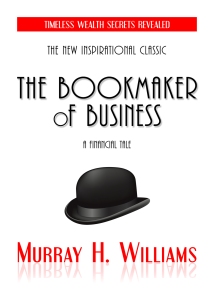The Holy Grail is described in mythology as the cup that Christ drank from during the Last Supper, and is described as having mystical and miraculous powers. It is the stuff of medieval and Arthurian legend. It is also metaphorically described as something magical and elusive that may or may not exist. For investment professionals, the Holy Grail would be a formula for trading the financial markets that generates superior results. But to determine whether The Holy Grail exists or not we first have to define our terms. What results would classify a trading or investment formula as the Holy Grail? Would it be a strategy that simply beat the stock market averages or beat it by a lot?
Some theorists believe there is no investment Holy Grail, just as some believe there is no secret to financial success. But throughout human history there have always been people who succeeded financially and those who did not. Is there a key that separates the successful from the unsuccessful? There must be otherwise it would not be happening, the same way it has happened for thousands of years.
The proponents of the Efficient Market Hypothesis (EMH) and Modern Portfolio Theory (MPT) would have you believe that it is not possible to beat the market averages and that everyone should just buy an index fund and be done with it. But if that were true there wouldn’t be managers such as Warren Buffett and George Soros and numerous others who have beaten the averages consistently for many years. If the odds were against them, then they would have lost money or their results would have mirrored the averages. It is obvious they are doing something different from the norm. The question is, what is it?
Proponents of EMH argue the averages cannot be bested because they take the performance results of the equity mutual fund industry as a whole and compare it to the market averages. The problem with this reasoning is they fail to make the connection that equity mutual funds as a whole ARE the market. Of course their results will not significantly differ from the averages. That is like saying someone who bets on every horse in a race cannot lose. Of course they can’t.
After years of experience and extensive research I’ve come to the conclusion that the Efficient Market Hypothesis, while valid, only applies to equity exclusive investors with broadly diversified stock portfolios. In other words, it applies to individual investors who only buy stocks, as well as equity fund managers. For example, if you are a stock fund manager with a required minimum of 100 stocks in your portfolio, then you will be at a disadvantage. Over time, your results will not significantly differ from the averages, and transaction costs will leave your results below that of the averages.
Mathematically speaking, there are two ways to beat the stock market averages:
- Have a concentrated equity portfolio
- Own multiple asset classes and rebalance regularly
Leveraging a portfolio will not beat the market averages, as I will explain later.
For example, let’s say we have a DeLorean and went back in time to the year 1990. For argument’s sake, let’s say you wanted to invest in equities but could only buy 5 stocks. You decided to buy Microsoft, Intel, Apple, Starbucks, and Walmart. How would your portfolio have fared? We all know the answer to that. A portfolio of these winners would have left the market averages in the dust. Of course hindsight is always 20/20, but this example demonstrates the power of a concentrated portfolio with superior performers. The trouble is, no one could have predicted that result let alone had the wherewithal to stay with those positions.
The other way to beat the averages is to own multiple asset classes. Different asset classes such as bonds, precious metals, real estate, and cash can not only reduce the overall risk of your portfolio, but also make it more profitable. By holding different asset classes and re-balancing them regularly, investors will be profiting from market fluctuations. This differs from the margin speculator who is betting on the direction of the market. He will always lose in the long run to the balanced investor.
The purely mathematical reason for this is because big losses hurt you more than big gains help you. Let’s say you start with $1000 and enter an investment that combines a 9 percent gain with a 9 percent loss. You would end up with $992. In contrast, let’s say a speculator entered the same position but instead used 10 times the leverage. He would end up with $190 at the end. Roughly an 80 percent net loss! This is astonishing when you think about it, especially the number of traders out there who are holding naked margin positions. When you ask most speculators about the potential risks of their trading systems they think simplistically that a 90 percent gain combined with a 90 percent loss will be a wash with no net gain. This is incorrect because they aren’t grasping the concept of the arithmetic versus the geometric mean.
With the arithmetic mean or simple average, you add up all the outcomes and divide by the number of outcomes. Whereas the geometric mean multiplies the outcomes and takes the root of the number of outcomes. For example, let’s take 3 numbers: 1, 7, and 13. The arithmetic mean or simple average would be 7, whereas the geometric mean would be 4.5.
(1 + 7 + 13) / 3 = 7 Simple Average
³√ (1 * 7 * 13) = 4.5 Geometric Average
The geometric mean is calculated by multiplying the three numbers and taking the cube root of the product. Compound return is the geometric average, not the simple average. Leverage always lowers the geometric mean of outcomes over time because once again, big losses hurt you more than big gains help you. Every consistently winning manager emphasizes and follows this rule. Large losses destroy a portfolio, and reducing or eliminating leverage is the first step to increasing absolute return. Investors should always choose the game with the highest geometric mean of returns. This is the Holy Grail.
However, if you define the Holy Grail as an investment system with all gains and zero losses, not even in the short term, then I would agree there is no Holy Grail. But a system that significantly beats the market averages over time could be classified as such.
In 1962 a mathematician by the name of Edward O. Thorp published Beat The Dealer, which presented the first popular mathematical system for beating the game of blackjack. The card counter was born. Contrary to popular opinion, the card counter was not immune to losses. He could lose half his bankroll during a losing streak. But if the counter kept playing, he would beat the casino significantly. It was just a matter of time. The odds were on his side.
Dr. Thorp discovered the Holy Grail of beating the game of blackjack. It was a probability puzzle and he figured out how to skew the odds in his favor. The financial markets are nothing more than one giant probability puzzle. If others have beaten it, it is entirely possible that you can too.
Be sure to check out my new book on Amazon.com. I know you’ll enjoy it.
Thanks!
-Murray


